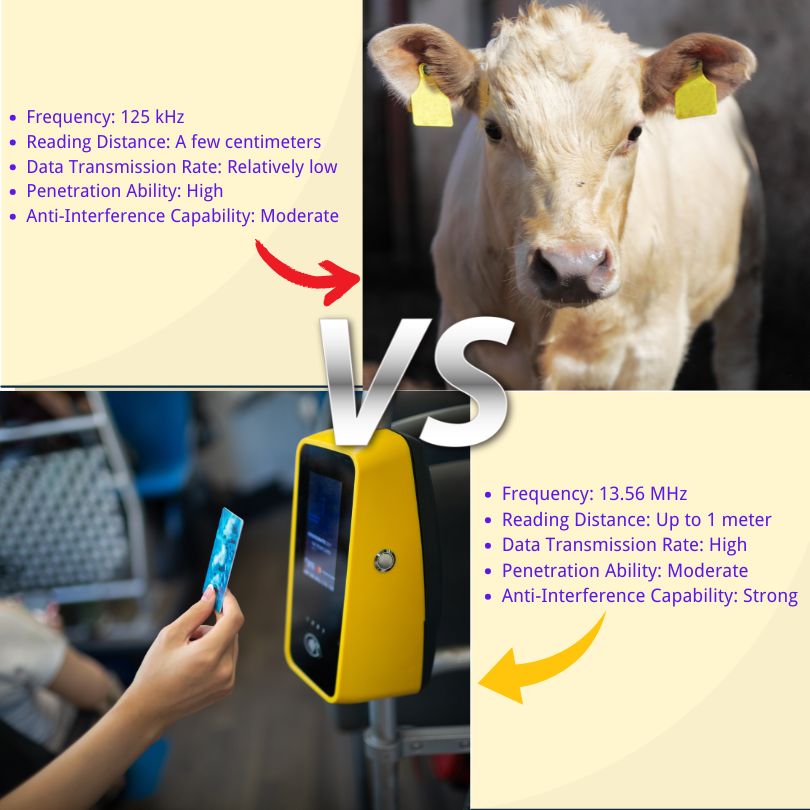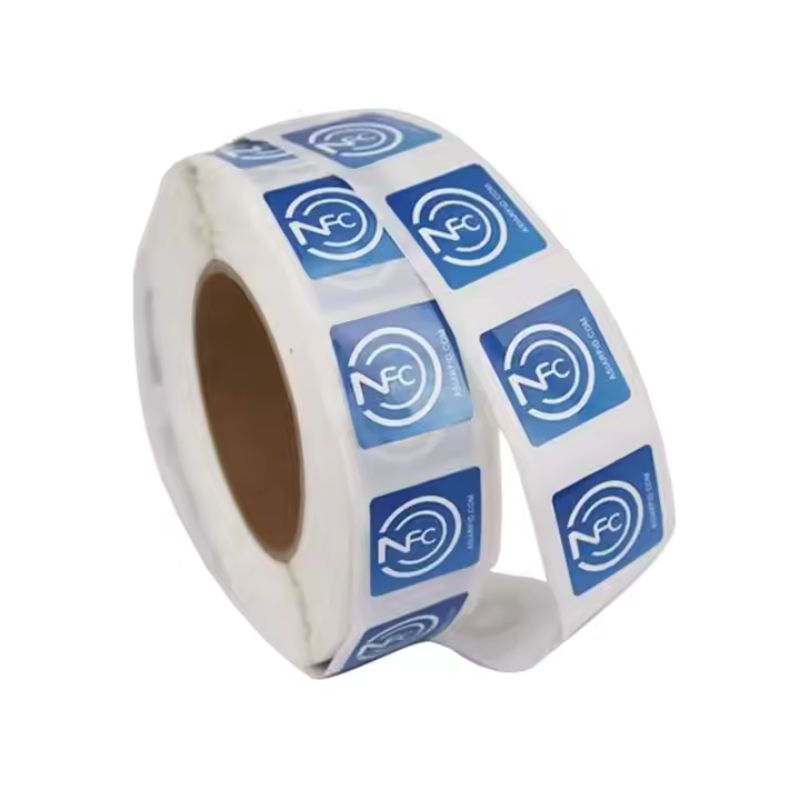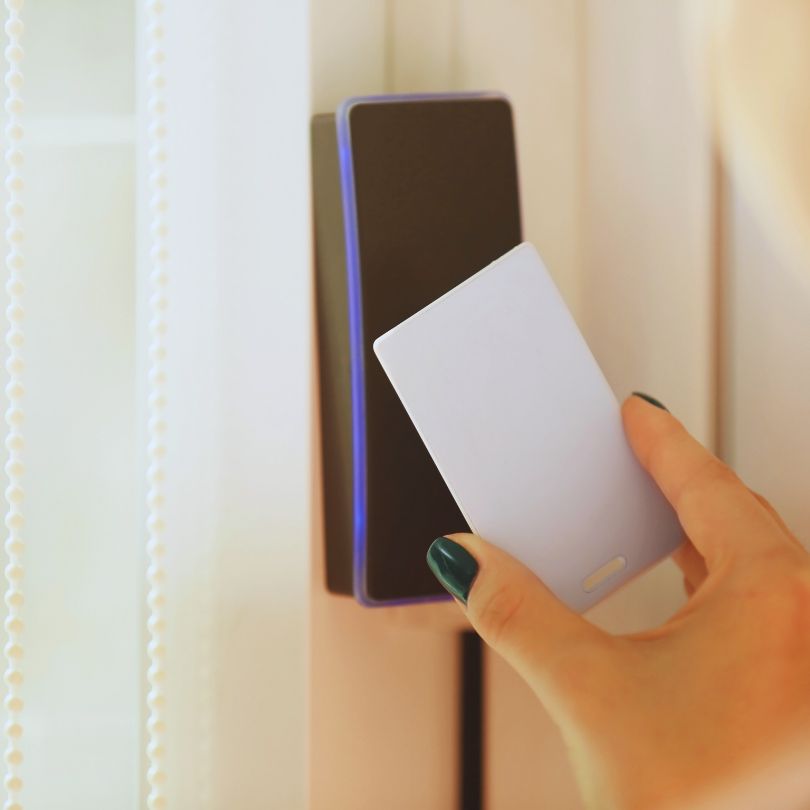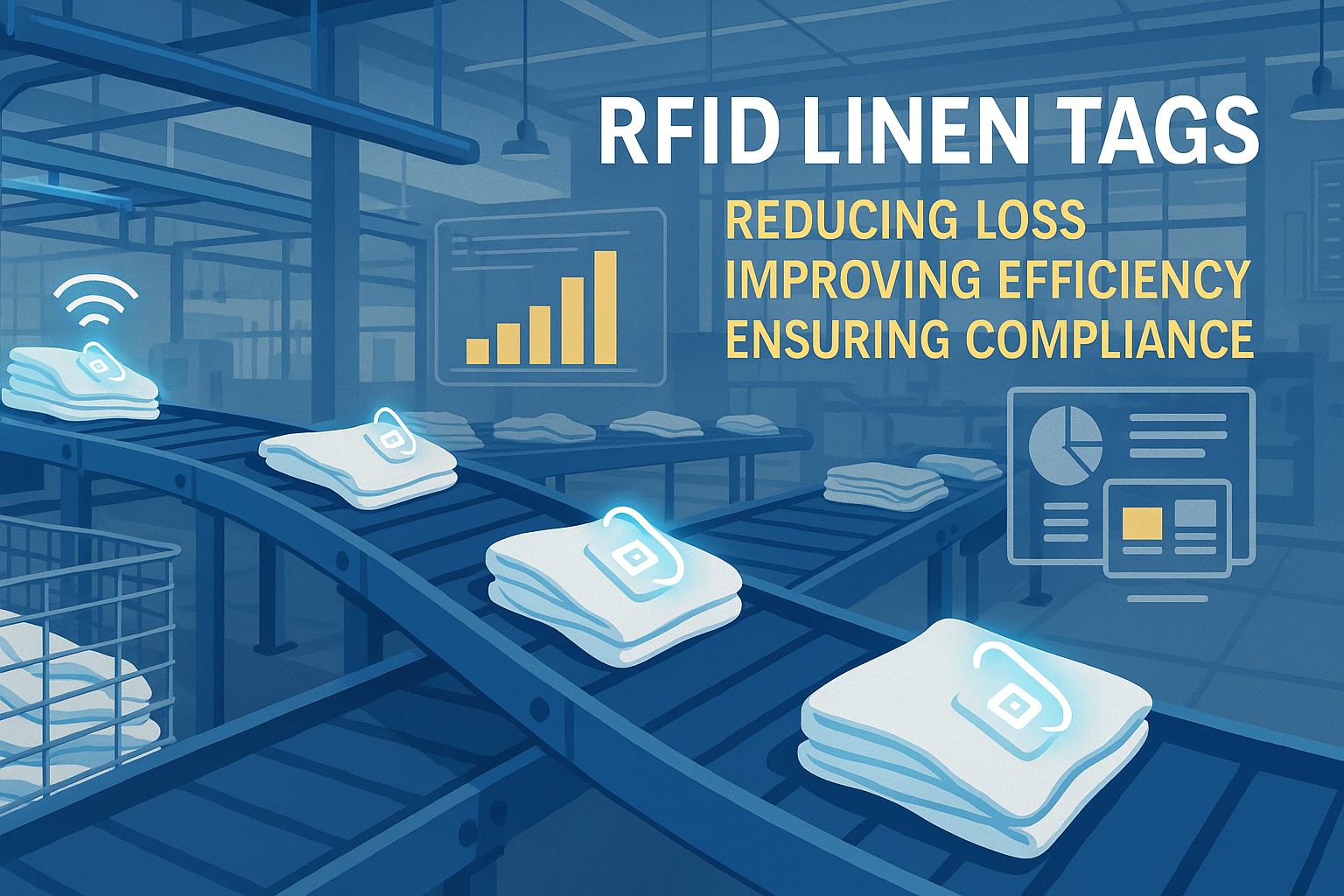
Compreendendo as diferenças entre as etiquetas RFID de 13,56 MHz e 125 kHz
Índice
Compreendendo as diferenças entre as etiquetas RFID de 13,56 MHz e 125 kHz

O que realmente significa a frequência RFID (LF vs HF)
Os sistemas RFID utilizam ondas de rádio para comunicar entre si. etiquetas e leitores. A frequência que utilizam afeta a distância que podem ler, a velocidade com que enviam dados, o seu comportamento em torno de metal ou água e o tipo de dados que podem armazenar.
Aqui está a ideia central:
Baixa frequência (LF) = 125 kHz Etiquetas RFID
- Curto alcance
- Taxa de dados mais lenta
- Excelente desempenho perto de metais ou líquidos
- Simples, resistente e acessível
Alta frequência (HF) = Etiquetas RFID de 13,56 MHz - Maior alcance
- Taxa de dados mais rápida
- Segurança mais avançada
- Compatível com NFC e smartphones
13,56 MHz vs. 125 kHz
| Recurso | Etiquetas RFID de 13,56 MHz | Etiquetas RFID de 125 kHz |
|---|---|---|
| Freqüência | 13,56 MHz (HF) | 125 kHz (LF) |
| Faixa de leitura | Até 1 metro | 2-10 cm |
| Taxa de transferência de dados | Alto | Baixo |
| Desempenho próximo ao metal | Moderado | Forte |
| Segurança | Suporta encriptação, autenticação mútua | Básico, normalmente sem encriptação |
| Suporte NFC / Smartphone | Sim | Não |
| Custo | Mais alto | Mais baixo |

Segurança: uma frequência é mais segura?
Etiquetas RFID de 125 kHz são frequentemente utilizados em sistemas mais antigos e normalmente utilizam IDs únicos fixos sem encriptação. Isso torna-os fáceis de clonar com dispositivos comuns. São adequados para sistemas de baixo risco, mas não cumprem os padrões de segurança modernos.
As etiquetas RFID de 13,56 MHz, especialmente os cartões MIFARE ou DESFire, suportam:
- Criptografia
- Autenticação mútua
- Armazenamento seguro de memória
- Várias aplicações num único cartão
Conclusão: - Opte por etiquetas RFID de 125 kHz para necessidades de baixa segurança (como chaves de armários, relógios de ponto).
- Escolha 13,56 MHz para controlo de acesso, pagamentos ou qualquer sistema que armazene dados pessoais.
Compatibilidade com NFC e smartphones
Se o seu projeto envolve telefones, as etiquetas RFID de 125 kHz não funcionarão.
Apenas Etiquetas RFID de 13,56 MHz suporte NFC (Near Field Communication) — a tecnologia utilizada em pagamentos móveis, check-ins e funcionalidades de emparelhamento por toque.
A maioria dos smartphones consegue ler e gravar etiquetas NFC utilizando 13,56 MHz, tornando esta frequência ideal para:
- Bilhetes digitais
- Check-ins em eventos
- Cartazes inteligentes
- Cartões de fidelidade
- Identificação móvel sem contacto
Se o suporte para smartphones é importante, 13,56 MHz é a sua única opção.
Casos de uso reais por setor
| Indústria / Aplicação | Etiquetas RFID de 125 kHz | Etiquetas RFID de 13,56 MHz |
|---|---|---|
| Controle de acesso | Sistemas básicos de entrada, portas antigas | Credenciais seguras, crachás de identificação modernos |
| Transporte público / Bilhetes | Não suportado | Cartões de tarifa baseados em MIFARE/NFC |
| Rastreamento de animais | Amplamente utilizado devido à penetração nos tecidos | Raro |
| Automação industrial | Confiável perto de metais/líquidos, uso resistente | Menos comum em ambientes adversos |
| Assistência médica | Não é ideal para acompanhamento de pacientes ou medicamentos | Melhor para identificação segura e etiquetagem de ativos |
| Bibliotecas / Arquivos | Raro | Popular para rastreamento e empréstimos de livros |
| Marketing / Eventos | Não aplicável | Cartazes inteligentes, passes NFC para eventos |
| Antirroubo para veículos | Etiquetas RFID de 125 kHz incorporadas em chaves/ignições | Não utilizado |

Como escolher entre 13,56 MHz e 125 kHz para o seu projeto
Use esta lista de verificação para restringir a sua decisão:
1. Nível de segurança
- Precisa de encriptação ou acesso seguro? → Opte por 13,56 MHz
- Rastreamento de baixo risco ou identificação básica? → 125 kHz pode ser suficiente.
2. Ambiente
- Alta interferência, metal ou líquido nas proximidades? → 125 kHz funciona melhor
- Escritório ou espaço interior limpo? → Qualquer um serve; escolha com base nas características.
3. Integração com smartphones
- Quer que os utilizadores façam a leitura com os telemóveis? → Apenas 13,56 MHz suporta esta funcionalidade.
4. Orçamento
- As etiquetas de 125 kHz são mais baratas inicialmente
- Mas 13,56 MHz oferece mais valor a longo prazo se precisar de funcionalidades ou segurança.
Ainda utiliza etiquetas RFID de 125 kHz? Atualizar ou manter?
As etiquetas RFID de 125 kHz continuam a ser amplamente utilizadas em:
- Sistemas de controlo de acesso legados
- Operações no chão de fábrica
- Marcação de gado
- Sistemas automáticos anti-roubo
Mas se estiver a gerir: - Credenciais do pessoal
- Sistemas de pagamento
- Cartões de identificação multiuso
- Integração NFC
... então talvez seja hora de mudar.
Caminhos de atualização:
- Instalar leitores de dupla frequência
- Emitir cartões combinados (compatíveis com 13,56 MHz e 125 kHz)
- Implementação gradual: suporte ambos os sistemas durante a migração
Perguntas frequentes sobre RFID de 13,56 MHz vs 125 kHz
13,56 MHz é o mesmo que NFC?
Sim, NFC é um tipo de RFID de 13,56 MHz. A maioria dos smartphones suporta essa tecnologia.
Um único leitor pode ler ambas as frequências?
Normalmente não. Precisará de um leitor de tecnologia dupla para lidar com ambos.
Qual tag tem maior alcance?
13,56 MHz geralmente tem um alcance de leitura mais longo (até 1 metro). 125 kHz é limitado a alguns centímetros.
Qual devo usar para o controlo de acesso?
Para sistemas de acesso modernos e seguros, recomenda-se fortemente a frequência de 13,56 MHz.
Por que as etiquetas RFID de 13,56 MHz e 125 kHz têm distâncias de leitura diferentes?
A diferença nas distâncias de leitura se deve principalmente à frequência operacional. Frequências mais altas, como 13,56 MHz, têm um alcance maior, enquanto frequências mais baixas, como 125 kHz, são otimizadas para distâncias mais curtas.
Qual etiqueta RFID é mais adequada para ambientes metálicos ou líquidos?
As etiquetas RFID de 125 kHz são mais eficazes em ambientes com metais ou líquidos devido às suas capacidades superiores de penetração.
O custo das etiquetas RFID influencia na escolha?
Sim, as etiquetas RFID de 125 kHz são geralmente mais econômicas, o que as torna uma opção adequada para aplicações conscientes do orçamento. No entanto, a escolha também deve considerar os requisitos de desempenho e os ambientes de aplicação.
Principais normas e tipos de chips
13,56 MHz (HF)
- ISO/IEC 14443: Utilizado em cartões sem contacto (MIFARE, DESFire)
- ISO/IEC 15693: Alcance mais longo, utilizado em bibliotecas, logística
- ISO 18000-3: Rastreamento ao nível do item
125 kHz (LF)
- Formatos proprietários, frequentemente com ID fixa (por exemplo, EM4100, HID Prox)
- Utilizado principalmente em sistemas mais antigos e aplicações básicas
Conclusões finais
Se ainda está indeciso sobre qual caminho seguir, aqui está um resumo:
Use etiquetas RFID de 125 kHz para:
- Condições adversas (metal/líquido)
- Aplicações de baixa segurança
- Implementações com consciência orçamental
- Sistemas legados
Use etiquetas RFID de 13,56 MHz para:
- Suporte para dispositivos móveis/NFC
- Acesso e pagamento seguros
- Cartões multiuso
- Sistemas preparados para o futuro
Ambos têm o seu lugar, mas deve escolher com base na utilização, e não apenas no custo ou no hábito.
Comentários
Produtos quentes

O que é a gestão de resíduos por RFID
Imagine uma cidade onde todas as lixeiras falam — não literalmente — mas através de um pequeno chip que informa ao sistema quando estão cheias, quando são esvaziadas e para onde vão. É isso que a gestão de resíduos por RFID está a fazer hoje.

O que são vedantes de parafuso e suas aplicações? | Guia completo
No comércio global e na logística, os selos de segurança desempenham um papel crucial para garantir a segurança e a conformidade da carga. Estes pequenos mas poderosos dispositivos foram concebidos para bloquear contentores de transporte, reboques e portas de carga com um mecanismo inviolável.

O que é um protetor de cartões RFID? Benefícios, casos de uso e guia de compra
A tecnologia RFID (identificação por radiofrequência) está em todo o lado: nos seus cartões de crédito, cartões de identificação, passes de trânsito, chaves de quartos de hotel e muito mais. Oferece rapidez e conveniência, mas também abre a porta a um novo tipo de roubo digital chamado "skimming". É aí que entra um protetor de cartões RFID.

Pulseiras RFID para eventos: Guia de compra a granel para organizadores
As pulseiras RFID para eventos estão a tornar-se a solução ideal para os organizadores que necessitam de entradas mais rápidas, prevenção de fraudes e pagamentos sem dinheiro em concertos, festivais e recintos desportivos. Ao contrário dos bilhetes em papel ou dos códigos QR, estas pulseiras inteligentes utilizam chips incorporados para agilizar o acesso, proteger as transacções e melhorar a experiência dos convidados.

Como a etiqueta RFID no para-brisas melhora o controlo de acesso de veículos e os sistemas de portagens
No mundo acelerado de hoje, a identificação de veículos tem de ser rápida, segura e sem contacto. Uma etiqueta RFID no para-brisas proporciona exatamente isso - uma forma fiável de gerir a cobrança de portagens, o estacionamento e o acesso a portões sem parar os veículos.

As vantagens das etiquetas RFID para roupa de cama na lavandaria comercial
Gerir a lavandaria em hospitais, hotéis ou grandes serviços de lavandaria é uma tarefa importante. Todos os dias, milhares de lençóis, toalhas e uniformes são lavados, separados e enviados de volta. Mas problemas como lençóis perdidos, erros de separação e contagem manual podem custar muito dinheiro às empresas. Por exemplo, os hotéis de média dimensão podem perder mais de $200.000 por ano devido à falta de roupa de cama.
É aí que entram as etiquetas RFID para roupa de cama.
Etiquetas
BLOGS RELACIONADOS

O que é a gestão de resíduos por RFID
Imagine uma cidade onde todas as lixeiras falam — não literalmente — mas através de um pequeno chip que informa ao sistema quando estão cheias, quando são esvaziadas e para onde vão. É isso que a gestão de resíduos por RFID está a fazer hoje.

O que são vedantes de parafuso e suas aplicações? | Guia completo
No comércio global e na logística, os selos de segurança desempenham um papel crucial para garantir a segurança e a conformidade da carga. Estes pequenos mas poderosos dispositivos foram concebidos para bloquear contentores de transporte, reboques e portas de carga com um mecanismo inviolável.

O que é um protetor de cartões RFID? Benefícios, casos de uso e guia de compra
A tecnologia RFID (identificação por radiofrequência) está em todo o lado: nos seus cartões de crédito, cartões de identificação, passes de trânsito, chaves de quartos de hotel e muito mais. Oferece rapidez e conveniência, mas também abre a porta a um novo tipo de roubo digital chamado "skimming". É aí que entra um protetor de cartões RFID.




